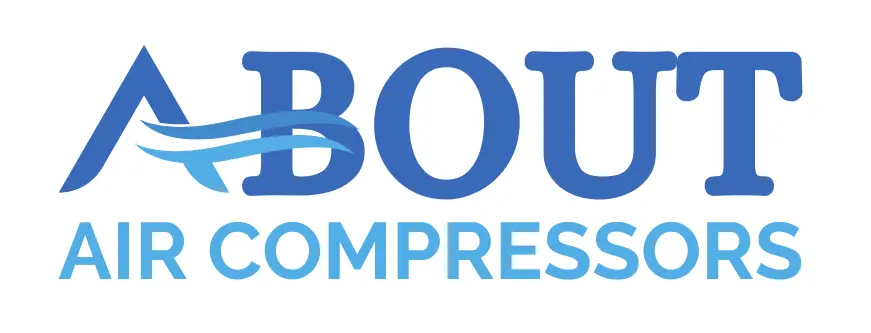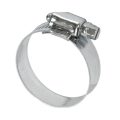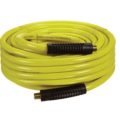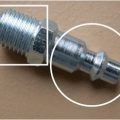Hey! This site is reader-supported and we earn commissions if you purchase products from retailers after clicking on a link from our site.
Copper pipe is often thought of as an excellent choice for use with air compressors and can be found in many air compressor systems across workshops and industries. This article will provide you with all the relevant information on using copper pipes for compressed air.
Table of Contents
- Copper Pipe for Compressed Air
- What Type of Copper is Used for Compressed Air?
- Copper Pipe for Compressed Air Sizes
- What Tools Do I Need for Soldering Copper Piping?
- How to Solder Copper Pipe for Compressed Air
- FAQs (Frequently Asked Questions)
Copper Pipe for Compressed Air
Copper pipes have great corrosion resistance and are very lightweight which makes them a great choice for compressed air. Copper pipes are easy to cut, weld, and suspend, making their installation easier than it would be otherwise.
However, it can be expensive to install copper due to the time and skill required to properly install it. Copper pipes are used in many plumbing applications and so, many fittings are available and many people know how to install them.
The color and shininess also add an aesthetically pleasing look for compressed air systems. Water does not cause copper to lead to rusting or corrosion and so the air being delivered to the tools through copper pipes is clean and free of debris. Copper, however, tends to cost more than other materials for piping like plastics.
Visit our Guide: Best Compressed Air Pipeline Materials For Compressed Air Piping Systems for more information on the other types of materials available.
Advantages
- Corrosion-resistant
- Lightweight
- Easy to cut and weld
Disadvantages
- Requires skill and time to install
- Expensive in comparison to plastics
What Type of Copper is Used for Compressed Air?
The answer to this question is simple, Type K. Type K copper pipe has the thickest wall of all the common types of copper. It is also typically used for water distribution, fire protection, oil, HVAC, and many more applications across the construction industry.
Type K copper pipe is available in either a rigid or flexible form and has the ability to be used with flared and compression fittings in your compressed air system. It is also possible to use a different type of copper pipe, like Type L for instance, as long as the pipe is adequately pressure-rated to suit the needs of your system.
Copper Pipe for Compressed Air Sizes
Copper pipe is available in sizes as small as 1/4″ and can reach anything up to around 8″, though of course, you would not want pipe this large for compressed air. Most compressed air users opt for 1/2″ or 3/4″ copper pipes for their compressed air systems. The size you need will typically depend on the length of your lines and the size of the tools at the end of the line.
What Tools Do I Need for Soldering Copper Piping?
The thing with copper piping, is you have to join the pipes together which can be very time-consuming. To help you get ready for a plumbing project which involves soldering copper pipe to join it, here is a list of tools you’ll need at the ready!
Torch
You need a torch capable of soldering the copper and this can be either propane or MAPP (methylacetylene-propadiene propane). Propane works just fine but it takes longer than MAPP. MAPP is usually more expensive but gets much hotter than propane so will heat the pipe faster. The choice is really up to you!
Solder
There are many types of solder available for use so make sure you buy a suitable one. Any sort of plumbing solder should be okay, but I would ensure you check that the solder is suitable for soldering copper plumbing pipes and safe for water.
Flux
Flux is an acid that makes the solder flow into pipe joints. Good flux is necessary to ensure that you have a good flow of air and do not end up with any leaks between joints. It’s possible to solder with most of the fluxes available at home improvement stores, but there are some you might prefer more than others. If you find a flux that works well for you, stick with it, as you may not find another flux equal to this one.
Striker
The striker is used to create a spark to start the torch with. Some torches may have auto strikers built-in so these would be unnecessary. It’s best to use a striker not an open flame to light a torch for safety reasons.
Copper Pipe Cutters
Copper pipe cutters are an easy way to cut copper pipes that are of unnecessary lengths to their correct lengths. These cutters leave a nice straight edge on the copper and help to minimize burrs on the cut edge.
Sand Cloth
The sand cloth allows you to make sure that the copper pipe and its fittings are clean, which is probably one of the most important things to do before beginning to solder copper pipe.
A good sandpaper cloth is necessary to clean the outside of the copper pipe. You should sand both ends of the pipe to about 1/2″ beyond the fittings.
Fitting Brush
Fitting brushes are important to clean the inside of the copper fittings, the wire bristles can prime the inside of the fitting to allow it to make good contact with the pipe.
Safety Items
It is also necessary to have the following on hand when soldering copper pipe so that nothing is able to catch fire:
- Water: a spray bottle of water is a must. Wet down any area you will be soldering first and then use it as a backup if anything begins to smolder. Also, you should wet the area back down when finished soldering since the residual heat may still catch fire.
- Fire extinguisher: always have a fire extinguisher handy when soldering copper pipes just in case something catches fire and you cannot put it out with just a spray bottle of water.
- Fire cloth: a barrier that is fire retardant can be positioned behind whatever it is you are soldering so that the surrounding area does not catch fire.
You should be able to obtain all these tools individually with ease, and may even come across kits that include a few together or everything you need for the job!
For instance, this soldering kit below on Amazon provides you with a propane torch and a striker.
Prices pulled from the Amazon Product Advertising API on:
Product prices and availability are accurate as of the date/time indicated and are subject to change. Any price and availability information displayed on [relevant Amazon Site(s), as applicable] at the time of purchase will apply to the purchase of this product.
Additionally to that, this plumbing kit below readily available on Amazon provides you with wire solder, flux, sand cloth, and an application brush!
- Contains 1/4 lb. roll of Oatey Safe-Flo Lead Free Wire solder, 1.7 oz No. 95 Tinning Flux, sandcloth, and application brush
Prices pulled from the Amazon Product Advertising API on:
Product prices and availability are accurate as of the date/time indicated and are subject to change. Any price and availability information displayed on [relevant Amazon Site(s), as applicable] at the time of purchase will apply to the purchase of this product.
How to Solder Copper Pipe for Compressed Air
Here I will provide you with a couple of very useful YouTube demonstrations that will help you with the process of soldering copper pipe.
FAQs (Frequently Asked Questions)
Type K copper pipe has the thickest walls and is the most suitable of all the types of copper pipe for use in compressed air. Type L may also be suitable.
Yes, type M can be used for compressed air but it is advised that type L or K are used as they’re thicker and more suited to this application.
While this depends and varies significantly on the type of copper pipe and it’s size, copper pipe can hold up to around 1000 PSI, and in some cases, even more!
Additional Reading:
- Using Aluminum Air Pipe For Compressed Air
- Galvanized vs Black Pipe For Air, Gas And Water
- Using ABS Pipe For Compressed Air
- Using Nylon Tubing For Compressed Air
- PVC Air Lines
- Using Pex Pipe for Compressed Air Lines – Do’s & Don’ts
- Best Compressed Air Pipeline Materials For Compressed Air Piping Systems
- Steel vs Brass Air Fittings
- Industrial vs Automotive Air Fittings
- Compressed Air Metric Fittings
- Air Hose Fittings Types – Guide To Air Compressor Coupler Types
- Compressed Air Fittings Guide
- Air Compressor Hose & Tube Guide
- Using Pex-Al-Pex Compressed Air & Pex-Al-Pex Fittings
- Pex A vs Pex B Pipe & Fittings
- PEX Fitting Types Guide
- How to Plumb an Air Compressor Setup in Garage
If you have any questions regarding copper pipe for compressed air, please leave a comment below, with a photo if applicable, so that someone can help you!







